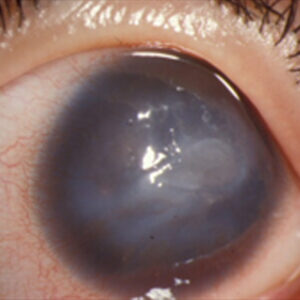Cornea
December 2020
by Liz Hillman
Editorial Co-Director
A retrospective study based on insurance claims data is giving real-world insights into prescribing/treatment patterns for two dry eye medications—cyclosporine ophthalmic emulsion (Restasis, Allergan) and lifitegrast ophthalmic solution (Xiidra, Novartis).1 In doing so, researchers can make inferences on adherence, discontinuation, and more.

Using information from IBM MarketScan databases from July 2016–February 2019, 6,537 patients were identified as receiving a new prescription for cyclosporine and 3,235 for lifitegrast. Adherence, measured by proportion of days covered by the drug, was 5.9% for cyclosporine and 9.7% for lifitegrast. Non-persistence, measured by refill data, was 7.1% for cyclosporine and 6.8% for lifitegrast. Discontinuation was 70.8% for cyclosporine and 64.4% for lifitegrast within 12 months of starting (median for discontinuation was 89 days for cyclosporine and 29 days for lifitegrast). In the post-index period, the study authors reported 5% switching from cyclosporine to lifitegrast and 9.6% switching from lifitegrast to cyclosporine.
Darrell White, MD, lead author of the study, gave EyeWorld further insights and interpretations from the findings.
“What I find interesting in this study is this is a somewhat rare example of a non-clinical data mining study in which practicing doctors were consulted on the precise types of analysis of data that would be most consistent with a real-world practice pattern,” Dr. White said.
Dr. White explained that patients are directed by pharmacists and the package insert to use one dropperette per dose then throw it away. Looking at that, Dr. White said, you would think patients would need to refill at 30 days for a 1-month supply or 90-days for a 3-month supply.
“In reality, the vast majority of patients, at their doctor’s encouragement, will use a Restasis dropperette a minimum of three times. That means a 3-month supply is going to last for 9 months. With Xiidra, there are precisely five drops in the dropperette, which means if you get good at it, you can get two doses out of it, so a single 3-month prescription could last for 6 months.”
In light of this perspective, Dr. White said it’s helpful to look at the 9-month data from the study. At this point, Dr. White said about 70% of patients were off their medications.
“We live in a Tylenol society. You have a headache, you take a Tylenol, and 30 minutes later you feel better. Dry eye doesn’t work like that.”
Darrell White, MD
Why aren’t patients staying on these drugs long term? The reasons are likely varied and multifold.
“We live in a Tylenol society. You have a headache, you take a Tylenol, and 30 minutes later you feel better,” Dr. White said, adding later, “Dry eye doesn’t work like that.”
Dry eye takes awhile to become symptomatic for patients, he explained. At that point, the underlying pathophysiology and inflammation/negative feedback cycle that’s been established cannot be undone quickly.
“You’re giving someone a medication that is going to take awhile to work. … As the prescribing doctor, you have to believe that it’s going to work because you are now a cheerleader. You have to do whatever it takes to convince your patient that they should go on the medication, then convince them that it’s necessary to stay on it. Making it a greater challenge is that both of the medications in this particular study can be uncomfortable. They both have side effects, and the side effects are unpredictable,” Dr. White said.
Dr. White said for lifitegrast, side effects “out in the wild” were different than those in the clinical trials.
“Side effects that were deal breakers for patients were much less common than in the FDA study, but they were more severe when they occurred,” he said. “People who had pain really had pain, and people [who] had blurred vision really had blurred vision. Now, interestingly, dysgeusia was more severe, but fewer people actually got it. We all know the Restasis story: Restasis burns. It hurts until it doesn’t hurt.”
If you can get patients to stay on their medications, Dr. White said they more often than not improve.
“It’s not surprising that people start it and stop it,” he said. “Those who do get better need encouragement to stay on the medication to avoid a relapse or recurrence of symptoms.”
Looking at the study findings as a practitioner, Dr. White said he now wants to go back and do the study again, looking at commercially insured patients only.
“I want to look at changes and adherence as defined by a refill being filled at either the 6- or 9-month period because now we have a very mature commercial market,” he said.
About the physician
Darrell White, MD
Founder
Sky Vision Centers
Westlake, Ohio
Reference
- White DE, et al. Real-world treatment patterns of cyclosporine ophthalmic emulsion and lifitegrast ophthalmic solution among patients with dry eye. Clin Ophthalmol. 2019;13:2285–2292.
Relevant disclosures
White: Allergan, Novartis, Sun Ophthalmics
Contact
White: darrellwhite@mac.com



